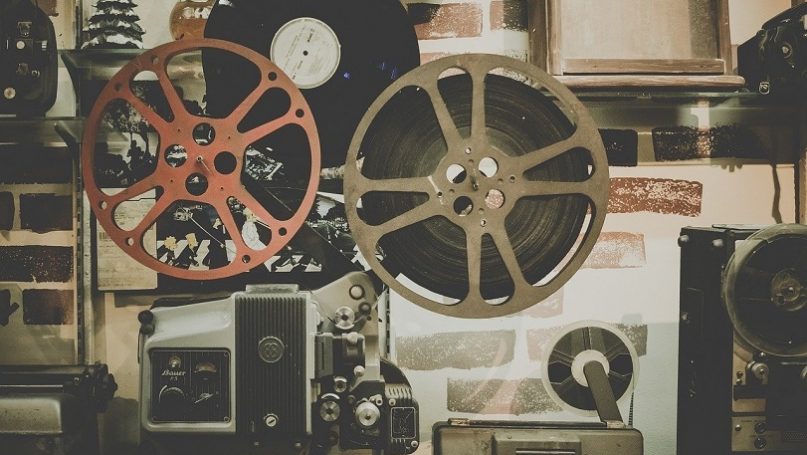
Hollywood, a term commonly used to refer to mainstream US-cinematic production, has transported audiences to far-off lands since the beginning of the 20th century. One particular production to receive a positive reception – and one of the 100 highest-grossing films in the US the year it was released – was Franc Cornaci´s Around the World in 80 Days (2004). Spectators flocked to the cinemas and accompanied the protagonists as they travelled through multiple countries, including France, Turkey, India and China. Though evidently works of fiction, such films leave the spectator with certain impressions of places and cultures that they may never have actually experienced. For this reason, Hollywood is understood to possess considerable “soft power”. This should not be underestimated, especially in light of the close relationship that has existed between the White House and Hollywood since the first studio was founded in 1911. Pertinently, the White House has called upon the services of Hollywood in times of war and crisis, including the declaration of the War on Terror by G. W. Bush in 2001. Since then, the MENA region has been thrust into the forefront of the American media, and it is no mere coincidence that a greater number of MENA characters feature in Hollywood productions from 2001 onwards. Throughout the 2000s, the main studios have been subject to a tidal wave of accusations, by both academic and non-academic critics alike, regarding the stereotyping and vilification of Arabs, Muslims and Iranians, groups which this study refers to under the umbrella term “MENA” (Middle East and North Africa). The representations or images these media offer have been crucial in the formation of the American public´s perception of the region. This is significant given that media and foreign policy mutually influence one another. With American troops withdrawing from Iraq after almost a decade, the representations presented and re-produced have and will have a real-world impact on both regions.
This study is interdisciplinary, drawing upon four areas of study, namely, orientalism, geopolitics, film studies and sociolinguistics, taking orientalism as the primary lens through which to interpret results. The next section, section 2, reviews the main literature produced in this field, identifying the gap which is addressed in the present study. In section 3, the research questions are established. Section 4 presents the wider theoretical framework within which this study is situated. Section 5 outlines the methodology used and section 6 constitutes the analysis. Finally, section 7 presents the conclusions.
2. Literature Review
This section presents a review of the literature related to the representations of the “other” in American media. “Otherness” is a significant mental construct referring to the quality of being different or “other”, especially if there are connotations of exoticness (Miller 2008). “Otherness” is therefore closely related to the concepts of intersubjectivity and recognition. Otherness-oriented research has been conducted in multiple areas, including race and ethnic relations. Within this area, extensive studies have been carried out regarding representations of the foreign “other” as well as American minorities by Hollywood, depictions of Muslims and Arabs in general, representations in Arab cinema, post-9/11 cinema, and linguistic analyses of accent usage in animation films.
2.1 Hollywood and the “others”
Countless studies criticise Hollywood´s tendency to stereotype and vilify nations, minorities and people groups, arguing that the reproduction of stereotypes has negative consequences for the groups depicted. In one such example, Dokotum (2020) extensively studies Hollywood film productions between 1908 and 2020 in which Africa is consistently presented as a homogeneous entity. Due to Hollywood´s enormous scope, the reproduction of a colonial mastertext and negative imaging of Africa have been consolidated on a large scale. On a national level, Greco Larson (2005) gives a broad overview of the representation of minority groups in American news, film and television. This book analyses the representation of the Latino, Black, Native American and Asian American populations, showing racial inequality is justified. Further, more specific studies into the depiction of each of these minorities have made a valuable contribution to the field (Ramírez-Berg, 2009; Olson, 2017; Broughton, 2020).
2.2 The MENA Region in Hollywood
In terms of Hollywood´s representations of the MENA region, the most salient examples are the fictional characters created by American television and film producers. Without a doubt, the leading scholar in this field is Jack Shaheen, author of the three foundational works on the representations of Arabs and Muslims: The TV Arab (1984), Reel Bad Arabs (2003) and Guilty: Hollywood´s Verdict on Arabs After 9/11 (2008). In addition, Shaheen features in Jhally´s documentary Reel Bad Arabs (2006) and has written numerous articles on the subject. According to Shaheen, Arabs are depicted as cultural “others” intent upon terrorizing Westerners, who manifest themselves almost exclusively in the forms of terrorists, villains, sheikhs, Egyptians and Palestinians or, in the case of the female Arab, dancing harem maidens (Shaheen 2001). Whilst Shaheen (1984, 2003, 2008) and Jhally (2006) serve as excellent referential works, covering a huge breadth of representations in film and other media, they lack depth and detailed analysis as the sheer scope of these studies allow for the dedication of just a few lines to each film analysed.
In more recent studies, numerous scholars have built upon the ideas of Shaheen, focusing on smaller selections of cultural productions from his inventories in order to carry out more detailed analyses. Recent examples includeHaider´s(2019) article that uses racialisation theory to analyse 11 post-9/11 Hollywood films, demonstrating how Muslim are vilified and dehumanised within the context of the War on Terror. In a similar vein, Adams (2019), carries out a qualitative content analysis of Arab and Muslim women in the television series Homeland, concluding that Islam is depicted as irreconcilable with American values, thus the series reinforces islamophobia.
2.3 Hollywood and Arab Cinema
Whilst these articles contribute important in-depth readings of individual films, they fail to consider Arab cinematic productions and self-representation of the MENA region. This aspect has been covered by Khatib (2006) who argues that history can be written differently from different angles and that film´s relationship with history is subjective. Consequently, specific events are interpreted differently in Hollywood and Arab cinemas, for instance, portrayals of the Arab-Israeli conflict. The book considers the questions of space, gender, nationalism, conflict and fundamentalism in films produced in eight countries between 1980-2005. Similarly, Mahdi (2015) offers a comparative case study of films produced by Hollywood and Egyptian cinemas to draw attention to the role of cultural politics in mediating a constructed image of “otherness” of Arab Americans. He found that Hollywood dismissed the cultural citizenship of Arab Americans and constantly questioned their allegiance and belonging.
2.4 The Impact of 9/11
The September 11 attacks are widely recognised as a turning point in the American psyche, as such, a plethora of studies have been published on the representations of US national identity in cultural artefacts in the aftermath of 9/11. Westwell (2015) comments on recurring themes and describes how post-9/11 cinema relates to different versions of US national identity in the aftermath of the September 11 attacks. McSweeney (2017) analyses a selection of ten films from the post-9/11 decade and asks how film reflects the defining fears of post-9/11 American society. Arva (2019) studies representations of trauma in the magical realism genre in Post-9/11 literature and film.
2.5 Linguistic Analyses
The studies mentioned thus far have taken an aesthetic- or narrative-based approach to media analysis. A number of interesting studies have also been published on language use in film and other media. Ibrahim Shousha (2010), in a critical discourse analysis of the image of Arabs in the American Press, analyses themes and frames in the selected articles and indicates that the linguistic features employed reinforce a negative image of Arabs as well as unequal power relations.
While the printed press offers a descriptive, third party assessment of the MENA region, other media, such as film, go one step further: screenwriters quite literally put words into the mouths of their fictional creations. Film constitutes a higher-impact, multisensory (visual and aural) and emotive medium. Rahimi and Amiran (2017) argue that in numerous productions, Iranians are consistently portrayed as cruel enemies as a reflection of the political climate. Using Van Dijk´s (2004) framework of critical discourse analysis to study Iranian characters in the film Not Without My Daughter (1991), the authors show how the film´s producers use “us” and “them” as social groups to create positive self-representation and negative other-representation. While both studies present interesting findings, critical discourse analysis can be considered a highly subjective and insufficiently rigorous approach (Breeze 2001, 1-2). For example, in only analysing selected articles and scenes, many instances of language use will have been overlooked.
Furthermore, linguistic analysis of scripted media should not be limited to what is spoken but should also consider how it is spoken. It is important to recognise that screenwriters not only choose the words uttered by their creations, but also their paralinguistic communication, such as pronunciation and tone, and extralinguistic communication, such as expressions and gestures. This too conveys key information to the spectator and is an important area of study. When considering representations of “other”, linguistic “othering” must also be taken into account. This is often realised by means of a foreign language or accented English. Bleichenbacher (2008) considers whether Hollywood films perpetuate patterns of negative stereotyping with regards to speakers of other languages in general. Using a corpus of 28 language contact films from a range of genres produced between 1983 and 2004, he examines whether being multilingual grants characters more or less power. Tayyara (2014) notes that the use of Arabic in film has increased since the late 1990s and examines the representations of Arab-Muslims through use of the Arabic language as a sociolinguistic marker between 1999 and 2008.
Regarding accent, dialect and use of the English language, a number of interesting studies have been carried out on children´s animated television and filmic productions (Dobrow, 1998; Soares, 2017; Maržić, 2019). The frequent use of foreign accents by villains in Hollywood productions, especially Received Pronunciation or “RP” (Standard British English) and Russian, has been researched extensively (Robinson, 2007; Ruijter, 2017).
2.6 Conclusion
These studies show that American media have a long history of misrepresenting and vilifying certain regions, nations and minorities in accordance with the political context of the time. Since 2001, depictions of the MENA region as a threatening “other” have been observed due to the declaration of the War on Terror (Haider 2019). Specifically, the impact of 9/11 and the War on Terror have been analysed with regards to the representation of Muslims and Arabs and recurring themes of trauma and fear. Studies on representations of the MENA region tend to focus on physical appearance and narrative. A small number of scholars have approached the topic of linguistic representations of the MENA region, though they use highly subjective Critical Discourse Analysis and focus almost exclusively on limited examples of content, omitting important extralinguistic and paralinguistic features. Conversely, extensive research exists on language use in animation films, which highlight interesting tendencies with regards to stereotype reinforcements.
2.7 Addressing the Gap
Whilst the representation of the MENA region in American media has been studied extensively, the linguistic aspect of these representations has largely been overlooked. The present study addresses this gap. Based on research carried out on accent, dialect and language use in animation films, this article employs similar techniques to analyse MENA representations in films produced between 2001 and 2008 – a turbulent period with regards to US foreign relations regarding many countries in said region. Given the significance of the language varieties used in animation films to convey meaning, it is important to consider how Hollywood film producers use linguistic expression in the creation of their characters and by extension, their constructed image of the MENA region.
3. Research Questions
This article asks how the language varieties of Hollywood´s representations or “images” of the MENA countries contribute to the reinforcement of negative stereotyping of the region under the G. W. Bush administrations (2001-2008).
Although definitions vary, here “MENA” (Middle East and North Africa) is defined as the “region as stretching from Morocco to Iran and from Turkey to the Horn of Africa” (Dumper & Stanley, 2007). Said (1978) uses the term Orient (a Eurocentric label for the same geographical space), which he suggests is an almost European invention (Said 1978:1). For the purposes of this study, the term “MENA” encompasses Turkey and Iran and excludes Israel. Although Israel is geographically integral to the region, it is excluded primarily due to its unique and close relationship with the USA, but also its evident religious and ideological distinctions from the rest of the region.
This study uses the consecutive G. W. Bush mandates (2001-2008) as the selected timeframe, given the widely acknowledged collaboration between Hollywood and the US government, and the political significance of certain MENA countries during this period (Dodds 2007a). The timely contact between Bush and Hollywood representatives in 2001 was widely criticised as it coincided with the declaration of the War on Terror, indicating that the industry would be used to popularise the US military campaign. A sociolinguistic analysis is therefore carried out which analyses all images of the MENA region that feature in the 100 highest-grossing box office films in the USA between 2001 and 2008. A range of linguistic features, such as accent, foreign language use, multilingualism and silence, will be analysed. Though it is important to recognise the exportation of Hollywood films, and consequently the translation of the linguistic features attached to these images (both in subtitles and dubbing) the present study focuses on a North American viewership and translation will not be examined in the present study, though would make for an interesting future investigation.
The present study poses the following questions: Which stereotypical images occur most frequently in the selected films? Which language varieties are assigned to these images? Is there any correlation between these language varieties and motivation? What does the linguistic expression of these images communicate to the spectator?
4. Theoretical Framework
In order to contextualise the reading of the selected films, the present research draws on different areas of study to construct a theoretical framework. Whilst there are many appropriate and relevant fields, this study will be situated primarily in the field of orientalism. The four most relevant fields to be explored in this section are: orientalism, popular geopolitics, film studies and sociolinguistics.
4.1 Cultural Geopolitics
Cultural geopolitics is situated within the wider field of critical geopolitics. Tuathail and Dalby (1998, 4) define conventional geopolitics as “the practice of statecraft by leaders and their advisors”, while critical geopolitics “complements this with an understanding of geopolitics as a broad social and cultural phenomenon”.
Within critical geopolitics, another leader in the field, Dodds (2007: 16), defines popular geopolitics as the study of the ways in which media contribute to the “circulation of geopolitical images and representations of territory, resources, and identity”. He claims that interest in the popular dimensions of geopolitics increased considerably in 2001 thanks in part to the declaration of the War on Terror and given the timely contact between the president G. W. Bush and representatives from Hollywood studios. Given its status as the dominant Western superpower, representations and images produced by the USA must be scrutinised, taking global political concerns into account. In this vein, popular geopolitics has been applied by a number of scholars to cinema.
Shapiro (2009), offers an interesting examination of film and politics in light of both the post-cold war and post-9/11 worlds. Saunders (2015) considers propaganda and the theme of imperialism in contemporary global politics as represented in the science fiction genre. Dodds (2003; 2006) and Funnell & Dodds (2017) consider the geopolitics of the Cold War as manifested in James Bond films. Numerous studies including Dodds (2007; 2008), Carter & Dodds (2011), Dalby (2008) and Weber (2005) examine the international politics of the War on Terror in contemporary film and cartoons. Saunders (2012) analyses fears of globalisation and loss of border control in the zombie subgenre.
Whilst it is necessary to acknowledge this approach, this study focuses specifically on representations of the MENA region and does not enter into a detailed discussion of the wider political context, therefore it is deemed more appropriate to apply an orientalism lens.
4.2 Orientalism
In this study, orientalism will serve as a theoretical frame basis for interpreting the findings of the investigation. The concept of “orientalism” was developed by Palestinian-American intellectual, Said (1978), in his revolutionary work Orientalism, in which he outlines the enduring Occidental attitude of superiority towards the Orient (Middle East and Far East), beginning in the eighteenth century –an ideology by which academics, writers and colonial administrators have historically approached the oriental “other”.
Orientalism has strong colonial connotations and can be defined in three ways: firstly, as an academic discipline within area studies, secondly, as a world view and finally as a “Western style for dominating, restructuring and having authority over the Orient” (Said 1978, 2-3). Europe and the Orient share a long history, the latter having played a key role in defining the former as its contrasting image. In the case of the USA, however, such a historical connection does not exist, rather it has inherited a European (and Eurocentric) view of the Orient.
Said (1978) criticises principal orientalist thinkers and argues that trends of orientalism present themselves in many disciplines. Since the publication of Orientalism, a myriad of valuable contributions have been made to the field, taking orientalism as a frame and applying it to a range of disciplines including: academia (Keskin, 2018), gender studies (Lewis, 1996; Bayraktaroğlu, 2019), and cinema (Bernstein & Studlar, 1997; Semmerling 2006; Cettl, 2009; Westwell, 2014). Shaheen (2003) draws upon Said (1978) in Reel Bad Arabs, his extensive inventory of Arab representations in US cinema. In section 2 (literature review) of the present study, Ibrahim Shousa (2010) also uses orientalism as a theoretical frame in her thesis on the image of Arabs in the American press. In a similar way, the present study considers the “New West´s” (USA) 21st century cinematic production through the lens of orientalism.
4.3 Film Studies
Given that the object of the present study are cinematic productions, it is essential to take relevant film theories into account. Shortly after the invention of the motion picture, Münsterberg (1916), in his book The Photoplay, establishes the discipline of film studies and offers an approach which examines the effects of the various elements of film making (style) and how these communicate ideas and emotions to the spectator. An important contribution to the field is the famous essay Le cinémalangue ou langage?by Metz (1964), which incorporates theories of semiotics into film studies, thus developing the notion of “film semiotics”. Film semiotics examines how meaning is conveyed in film, both denotatively (literally) and connotatively (implicitly) (Metz, 1964). This study focuses on connotative aspects, i.e. in the linguistic analysis carried out, the denotative element is meaning of the words spoken, whereas the connotative element is the way in which those words are spoken.
More recently, the somewhat controversial “screen theory”, developed by the British journal Screen in the 1970s, is relevant to the analysis carried out in section 6 as it considers the effects of cinema positioning the spectator using various techniques in order to elicit a particular reaction. The objective of screen theory is to understand how media (cinema) can compel us to adopt certain beliefs and identities, arguing that the spectacle creates the spectator, not the other way around. This theory approaches how form, that is editing techniques, prepares a predetermined subject-position for the spectator.
4.4 Sociolinguistics
This study considers film production techniques, specifically the use of linguistic techniques and how these relate to the (re)construction of orientalist images and stereotypes in general. Thus, a sociolinguistic frame is required in order to establish basic concepts before applying them to the analysis presented in section 6. Sociolinguistics – the study of society´s effect on language – is relevant to the present study as it acknowledges that language is, by its very nature, a communicative and interactive practice and, as such, is produced within, by and for a certain community.
In their chapter on language attitude studies, Giles and Rakić (2014) consider accent in relation to social identity. Individuals socially evaluate an interlocutor based on voice from the first instance, deducing different kinds of images from ethnicity to personality to socioeconomic status. Far from constituting objective assessments, these attitudes are “clusters of beliefs that govern social judgments of speech styles and their users” (Giles and Rakić 2014, 12). This is an important starting point given that film producers seek to play upon this phenomenon in character creation, recreating the same effect in scripted language production, thereby eliciting the desired reaction from the spectator and drawing them into the narrative.
This study draws heavily upon Lippi-Green’s (1997) sociolinguistic approach to accent, dialect and bilingualism. Chapter 7 presents a quantitative analysis of language varieties used in animation films, categorising characters according to language variety, motivations, gender, setting, etc. and comparing the results from one category with another. Findings indicate that animated films link language varieties associated with certain nationalities and ethnicities with “social norms and characteristics in non-factual and sometimes overtly discriminatory ways” (Lippi-Green 1997, 101).
5. Methodology
5.1 The Power of Cinema
Cinema is a powerful expression of cultural politics. When considering the USA´s current superpower status and the US film industry (Hollywood)´s wide reach both nationally and internationally, it becomes evident that images and ideologies projected by this medium have power to impact the real world.
Of cinema tickets sold in the US and Canada between 1980 and 2019, there is a peak between 2001 and 2004, coinciding with the 9/11 attacks and the Iraq War. Whilst the two are not necessarily linked, it is important to consider that there were a greater number of cinemagoers paying to watch Hollywood films during this period of direct conflict with certain groups in the MENA region. This study focuses on the 2001-2008 period, during which time the lowest number of tickets – 1358.04 million – was sold in 2008. This is still a significant quantity and does not imply that the reach of Hollywood diminished as the number of tickets sold rose again in 2009.
Shaheen (2003) highlights film’s power to educate through repetition. He argues that the stereotypical images of Arabs in Hollywood are not only constantly reproduced, but are also the only images produced, leading to a general homogenisation of the Arab world and its people. Given that these films are viewed by millions of spectators in North America alone, a large part of which are American voters, the images proliferated by Hollywood have a real political influence. This becomes even more significant if the impact of US foreign policy in almost all parts of the world is taken into account.
Furthermore, these cinematographic productions do not fall into oblivion after production, but rather endure for generations in the form of DVDs and streaming services, not to mention illegal downloading. Film is a form of recorded speech, which is one of the more permanent language modes (Crawford & Csomay 2016). Therefore, films continue to relate the same images and messages long after production and initial reception. In summary, Hollywood´s representations of reality are readily available, whereas alternative versions may well not be.
5.2 The Significance of Stereotypes
Before beginning with our analysis, we must first offer a definition of the term “stereotype”. In terms of social perception, stereotyping is a useful social tool which draws upon previous information in order to categorise people and people groups (Rosch, 1978). It is a problem-solving strategy which maximises the information obtained whilst requiring a minimum expenditure of effort. A stereotype is defined as an “oversimplified set of beliefs about members of a social group or social stratum” (Andersen & Taylor 2016). Stereotypes are usually based on the most salient characteristics of race, gender and age. They therefore function as a lens through which different groups perceive each other.
This principle applies not only to the real world, but also to representations of it. For instance, readers of fictional narratives draw on stereotypes when evaluating a character´s personality (Auracher & Hirose 2017). Here, the reader´s cultural beliefs and values have influence given that culture directly shapes our cognition and by extension the way in which we process information. In her discussion of “categorisation”, Fiske (1998) breaks the concept down into three parts, arguing that stereotyping is the most cognitive component, prejudice the most affective component and discrimination is the most behavioural component of categorisation. Stereotyping, therefore, constitutes a danger as it can lead to discrimination and have a very real impact on the personal and professional lives of certain communities.
Language is a powerful social practice and has been employed frequently in the creation of stereotypes in film and other media. Dragojevic et al. (2016) notes that if the media repeatedly exploit these language stereotypes and present them to viewers, the audience may start to believe that these claims are true. More specifically, when the only experience individuals have with different ethnic groups is through media, there is a higher chance of stereotype formation since the media tend to present just one version of events that will often be generalized to the entire group.
5.3 Common MENA Stereotypes in Film
Shaheen (1984; 2001; 2003; 2012) offer exhaustive lists of Arab depictions (re)produced by filmmakers since the production of The Sheikh in 1921. One common image is that of wealthy sheikhs who control oil wells. According to the author, they are often depicted with black beards, headdresses and dark sunglasses, in pursuit of blonde Western woman, involved in arms deals and intent on world domination. Arabs who try to kidnap, rape or murder fair women and/or enslave and abuse black Africans are common themes. Other productions depict: uncivilized camel-riding Bedouins; submissive, harem maidens; unidimensional women dressed in burqas; devious enchantresses; souk swindlers and begging children. Anti-Christian Arabs and pro-Nazi Egyptians also appear. Finally, there are armed terrorist and religious fanatics. Of these many negative images, the most common caricatures are villains, sheikhs, maidens, Egyptians and Palestinians. In addition, Shaheen (2008) discusses the degrading, cameo appearance of Arabs in films which have nothing to do with the storyline, as well as the immoral Arab-American.
Semmerling (2006) argues that Arabs are devised to produce fear in an American cinematic audience. They serve as the inverse of the image of the American hero who fights for “the American way”. Evil character and intentions are therefore projected onto Arab peoples, landscapes, and cultures. This deliberate comparison drawn between the two groups casts a positive light on US ideology and culture. Semmerling (2006) suggests that the reasoning behind this phenomenon rests in the conflicts between the United States and certain Middle Eastern countries, particularly since the oil embargo of the 1970s and continuing through the Iranian hostage crisis, the first and second Gulf Wars, and the struggle against al-Qaeda.
5.4 MENA Stereotype Categories
While the previous descriptions provide a general idea of the types of MENA images projected by Hollywood, in order to carry out a quantitative analysis, clear stereotype categories must first be established. Shaheen (2001; 2008) established the five most frequently occurring stereotypes: Villains, Sheikhs, dancing harem maidens, Egyptians, and Palestinians. Yousman (2007: 5) summarises Shaheen´s (1984; 2001; 2003) descriptions and identifies a pattern of female Arab stereotypes portrayed almost exclusively as “seductive belly dancers, female terrorists, and burqa-clad props with no real identity of their own”.
Based on the three principle works of Shaheen and observations made during the viewing of the selected films, this researcher has chosen seven categories of MENA stereotypes that frequently appear in Hollywood films (see Table 5.1). Here, we do not include Shaheen´s (2003) “Palestinian”and “Egyptian”categories for two reasons. Firstly, as far as is possible, we try to avoid any overlap, considering that any image could fit into the established categories and also be Egyptian or Palestinian. Secondly, although they are the most frequently occurring nationalities, this is indicative of reductionism rather than stereotyping.
Further, we omit Shaheen´s (2003) “Villain”, opting instead for the category Enemy. This is because, although they are similar in their opposition to the protagonist, “Villain” is usually considered to be a main character, whereas this study finds that there are minor characters and other images which fit into the Enemy category. Here, we define Enemy as a rival intent upon defeating, harming or destroying the protagonist(s). Terrorist is evidently a subcategory of Enemy, yet due to sheer volume of examples, shall be considered as a separate category. Terrorist is differentiated from Enemy in being limited to an individual or group who does or intends to carry out acts of terrorism in the past, present or future whether their target be the protagonist or another.
Shaheen (2003) offers a lengthy description of “sheikh”, yet this study opts for the most basic definition he offers: “wise, elderly person, head of the family”. Therefore, Sheikh is defined as any male figure of authority. Shaheen (2003) also offers three tendencies within his descriptions of his category “maiden”: an eroticised harem maiden or slave girl; a silent, shapeless woman dressed in a burqa; a dangerous and devious enchantress. This study considers these three images to be quite distinct from one another; while “enchantress” possesses power, the others are marked by their powerlessness. Further, the burqa-clad female and the harem maiden differ from one another on the basis of sex-appeal and physical attractiveness. This study, therefore, divides Shaheen´s (2003) “maiden” into three: Maiden, the harem member; Enchantress, in possession of magical powers; and Oppressed, silent, relegated to the background and dressed in a burqa.
The final stereotype category, Subservient, is added for the purposes of this study. Subservient denominates those recurring images that hold a position of inferiority and encompasses two kindsof image: those that directly serve the protagonist and those that plead for help and need to be rescued.
Finally, Other will be included as an additional category, but not as a stereotype (hence its exclusion from Table 5.1), rather, it consists of those images that do not fit into the stereotype categories established in Table 5.1. That is not to say that these images are necessarily positive as stereotyping is not the only harmful practice employed by the media. Other includes, but is not exclusive to, token characters, for instance. Whilst tokenism could be considered the inverse of stereotyping, the outcome is much the same. Tokenism describes a deceptive relationship between members of two groups: the “deviant class” (marginalised groups) and the “dominant class” (Lee 2020: 387). This relationship is supported by a set of beliefs in which deviant class members are merely servants of the dominant group and not full members of the community. The “token” is a member of the deviant class who is apparently integrated into the dominant class. However, this serves only to distract from the core issue, thus prolonging the subordination of the marginalised group. In film, this translates to lone positive examples of a certain group allied with the protagonist(s) in a given production.
Though there are similarities between token characters and the qualities of Subservient images, they differ on an important point: the relationship with the protagonist. Consequently, they are not perceived by the spectator in the same way as Subservient images. On the one hand, Subservient denominates a servant or an individual or group in need of assistance, usually poor or in a desperate situation with little to offer the protagonist(s). On the other hand, the token characters observed possess strength, valour and valuable skills. Though there is undoubtedly an important element of servitude – the token always serves the agenda of characters representative of the dominant class and appears not to have an agenda of their own – there is also a genuine bond of apparent equality and mutual respect. In the case of the token character, it would seem, servitude is freely chosen, not born of necessity or employment as in the case of Subservient. Token characters ally themselves with the protagonist(s) for reasons which are unclear and said allegiance frequently leads to them ultimately perishing in service of the protagonist(s). Although the spectator may become fond of a token character, they are often the sole positive representation of a certain group within a production: this is the exception, not the rule. As a consequence, their presence onscreen does nothing to diminish films´ overarching vilification of the MENA region.
5.5 Methodology
Language is an important component of character construction. As is true of all other character components, voice is also an artificial, scripted construction. Film producers are conscious of the fact that different accents carry different stigma and connotations, for example, a French accent typically has romantic connotations. Mainstream US English in this case is unmarked and considered standard. Producers are aware of their target audience(s) and use voice to either distance or align certain characters with the protagonist, thus constructing an image and calculating audience reception.
This study employs an adaptation of the methodology established by Lippi-Green (1997) in her analysis of accent in animated Disney films produced between 1938 and 1994. This study carries out a sociolinguistic analysis of representations (henceforth called images) of the MENA region that feature in the 100 highest-grossing box office films in the USA produced by the American film industry (Hollywood) between 2001 and 2008 (see Table 5.2 for complete list).
First, the 100 highest-grossing box office films in the USA every year between 2001 and 2008 were identified (imdb.com). Plot summaries and reviews were scrutinised, and all productions with content which makes reference to the MENA region noted. These films were viewed and a final selection of the films with relevant content – 29 in total – was established. The relevant scenes were then viewed multiple times, and the 126 representations or images of the MENA region observed were recorded in tablature form (see appendix 2). It is important to note that, for the purposes of this study, an image does not necessarily equate to a character. The Persian soldiers in 300 (2006), for example, shall be considered as one image to avoid duplication. Similarly, the speech made in Jarhead in which Kuwait is described as a victim of Iraqi aggression and enlarged photos of injured Kuwaiti children are simultaneously shown, is also counted as one image. Therefore, in an attempt to be as thorough as possible, this study includes all MENA images featuring in the 100 highest-grossing films produced between 2001 and 2008. Though main and secondary characters have more screen time, subtle representations are also important and influential, including silent, invisible, minor and cameo roles. In the same way, this study does not exclude any particular genre because a global analysis shall be carried out.
The 126 MENA images were then noted, analysed and categorised for a number of language and characterisation variables (see appendix 2). The characterisation variables considered are stereotype, gender and motivation. Where there is overlap of two stereotype categories, for example, there occurs an image of a sheikh who is also a terrorist in Syriana (2005), a decision was taken based upon the subjective observation of the most apparent identity manifested within the narrative. Each characterisation variable was then analysed in relation to language variety and results presented in graphs and tablature format. In some cases, the language variety is unclear, for instance, The Sorceress in The Scorpion King (2002) uses MUSE (Standard American English) but for the pronunciation of a few words, therefore we class this example as MUSE.
Some adaptations were made to the Lippi-Green (1997) methodology. While the original methodology considers Standard American English (henceforth, MUSE), British and foreign accents, the present investigation will consider: MUSE, other native English varieties, foreign-accented English (FA English), multilingualism (the use of two languages), Arabic, other foreign language and silence. Within multilingualism, there are examples of Arabic, mock Arabic, Farsi, Urdu, other foreign languages and fictional languages. We compare and contrast the language varieties used with the previously established stereotype categories. In her study, Lippi-Green (1997) analyses animated children´s film, therefore she includes a category entitled “humanoid or animal” which is not relevant to this study given that no animal images feature in the films selected.
6. Analysis
6.1 Gender
Of the 126 MENA images in the 29 films examined, 99 are male and 17 are female, or approximately 79% and 13% respectively; and both male and female images are distributed equally between major/supporting and minor role.
The vast majority of MENA images are therefore masculine. Figure 6.1 shows that the majority (30%) of all male images fall within the category of Enemy, whilst 26% are Other. The Other category overwhelmingly consists of different ranks of armies, guards and police forces, which heavily implies that male MENA images have strong conflictive connotations. However, Other also includes Bedouin, manual labourer, interpreter, architect, scientist, politician, president and prince images, although with much less frequency.
If we consider only major/supporting images, as shown in Figure 6.2, 54 of a total 64 are male. We see that the main body of male images is divided equally between Enemy (30%) and Terrorist (30%), whilst the Other category is reduced to 20%. This is significant when we consider that major/supporting images tend to be more developed, consequently, these images have more screen time and a greater impact on the spectator. If we consider Terrorist as a subcategory of Enemy, we can conclude that 60% of the major/supporting male images are antagonistic. Sheikh is the least-frequently occurring category (alongside Subservient) of all male images considered in this analysis.
Although far fewer in number, it is necessary to analyse the frequency of occurrence of female stereotyped images. Figure 6.2 shows that Subservient is the largest stereotype category. As opposed to the most frequently occurring male images, this result implies that female MENA images are poor, in need and lesser than the protagonist(s). Nevertheless, it must be recognised that the vast majority of female images fall into the Other category, perhaps indicating that there occurs less stereotyping of the female image of MENA. Whilst those male images that come under Other are largely professions, Other female images almost entirely consist of family members and lovers. The female image of MENA, then, is not to be found in the workplace but rather underpins MENA women´s family role.
There are only seven occurrences of major/supporting female images – compared to 32 occurrences of major/supporting male images – and it is worth noting that the majority (57%) are Maiden. These images are often eroticised and are portrayed by multiple actresses, thereby removing the individuality of the MENA female image. Furthermore, given the connotations of slavery which are often present, agency is also revoked. There is one example of Enchantress in the eight-year period, implicit of a greater degree of agency, however it is important to take into account that this example is also held prisoner during the entirety of the film. There are no female terrorists among female images, nor are there any occurrences of Oppressed, contradicting the findings of Shaheen (2003).
Consciously or subconsciously, film producers divide male and female images into two distinct groups. On the one hand, the more frequently occurring male image of MENA is overwhelmingly one of terrorism and antagonistic violence. On the other hand, the most obvious female image of MENA is that of a group of eroticised youths, while the more subtle image pivots on a family role.
6.2 Gender and Language Variety
Figure 6.5 shows the language varieties spoken by male MENA images. The term “multilingualism” refers specifically to the use of two or more language varieties. Sheikh is the only image to use multilingualism in the majority of images. This could perhaps indicate a higher level of education, which would seem logical given the connotation of wealth attached to this stereotype.
Shaheen (1984, 2003), describe the “sheikh” stereotype as “lecherous” and “greedy”, often associated with the kidnap and abuse of Western woman. However, only two highly stereotypical examples can be observed of a total of ten Sheikh images in total. Firstly, the character of Prince Hapi (Arnold Schwarzenegger) in Around the World in 80 Days (2004). When a group of travellers arrives in Istanbul, Prince Hapi informs them that their female companion, Monique (Cécile de France), must remain in Istanbul to become “Wife number seven”. Secondly, Prince Habeeboo (Rob Schneider) in Click (2006) who asks an architectural firm to design a “bikini hot restaurant”. This scene depicts him as a shallow, wealthy Arab who is attracted to Western women. While Schwarzenegger uses his own Austrian accent, Schneider imitates an Arabic accent for the role and his voice become high-pitched as he feigns outrage, both adding a sense of ridiculousness to the scenes. Voice help to construct these caricatures who are not to be feared as villains, but rather ridiculed by the viewer as comical and eccentric minor threats to the protagonist. Despite these two caricatures, the remaining eight Sheikh images that feature in three films do not have lecherous connotations; six images use Arabic and a variety of English and the remaining two use Arabic exclusively, making them seem more “realistic” than the aforementioned caricatures. The Sheikh image, then, is not frequently occurring and has largely moved away from the stereotypical depictions described by Shaheen (1984, 2003).
Terrorist uses all of the non-native language varieties and none of the native varieties, depicting them as entirely foreign. This image uses most Arabic language of all the stereotypes (not including Other). Enemy, on the other hand, uses no Arabic at all, whilst offering examples of three native English varieties (including African American Vernacular English or AAVE). Further, it uses the greatest amount of silence, followed by Subservient and Other at a distance. Silence is meaningful and communicative (Ephratt 2007). We deduce from these categories that silence has two principle meanings: firstly, in the case of Enemy, silence could imply threat and danger, secondly, in the case of Subservient, silence could imply submission or respect.
In the case of the linguistic expression of female MENA images, Arabic is hardly used across all categories. If we compare Maiden with Sheikh, given that these two images often appear together, silence is salient in Maiden whilst not present in Sheikh. Again, this type of silence is likely implicit of submission.
6.3 Motivation and Language Variety
Here we discuss the motivation and actions of a given image in relation to those of the protagonist. Hence, positive motivation signifies alignment with the protagonist, negative motivation signifies opposition to the protagonist(s), and mixed motivation signifies unclear or changing motivation and actions. The spectator is typically aligned with the protagonist – who is a white, English-speaking male in 28 of the 29 films studied – and is therefore led to perceive characters in the same way as the protagonist(s).
In Figure 6.7, on the one hand, we see the most frequent male stereotypes, Enemy and Terrorist, have almost entirely negative motivation. On the other hand, typical female stereotypes Maiden and Enchantress are mixed. Interestingly, Subservient and, to a lesser extent, Other images also have mixed motivation, implying that while they do not pose a direct threat to the protagonist(s), they are untrustworthy. Sheikh also presents all three classes of motivation, therefore, the motivation presented by this image is unclear, not necessarily negative.
Overall, positive motivation is the least frequently occurring, implying that most MENA images have intentions that conflict with those of the protagonist(s). Even mixed motivation, whilst not directly negative, projects untrustworthiness onto the MENA image.
Figure 6.8 shows motivation compared to language variety. The findings are organised in such a way as to show increasing divergence of language from Standard American English (MUSE) from left to right. The findings show that MUSE or other varieties of native English are used very little regardless of motivation, as is the case of “other languages”. FA English and multilingualism are used most frequently.
Exclusive use of the Arabic language (i.e. not in combination with any other language) is most frequent in images with mixed motivation. This indicates a possible link between the perception of Arabic-speakers as untrustworthy, though further research is required to verify this hypothesis.
Curiously, most images with positive motivation use two or more language varieties (multilingualism). The most frequent combination is Arabic and a variety of English, though numerous combinations are observed. Conversely, there is also a high frequency of multilingualism in negative and mixed motivation, resulting in a far greater overall total of negative and mixed motivation images that use multilingualism.
While multilingualism is employed across all motivation types, the sole use of FA English is favoured for negative and mixed motivation. Again, further research is required to explain this phenomenon. Similarly, silence is used much more frequently by those with negative motivation. As can be seen in Figure 6.5, silence is most frequent in the Enemy and Subservient stereotypes. We deduce from this that silence has two principle meanings: firstly, in the case of Enemy, silence could imply threat and danger, secondly, in the case of Subservient, silence could imply submission or respect.
6.3.1 Positive Motivation
Figure 6.9 shows the relationship between stereotype and language in positive motivation images. Here, it is important to note that the majority of positive motivation images do not fall into the stereotypical categories established, but rather count as Other images. Within positive motivation Other, native varieties of English are used most frequently, thereby reducing the perceived distance between the American spectator and the onscreen image. In the three stereotypical categories to feature with positive motivations, Subservient, Maiden and Sheikh, both multilingualism and silence are predominant. Here, the use of silence could imply a lack of importance and depth given to these images.
6.3.2 Negative Motivation
Figure 6.10 shows in more detail the negative motivation images by stereotype and language variety. The largest grouping is Enemy within which silence is used more than any other language type, likely giving the impression of menace or a lack of deep thought and reflection. Native English varieties are also used, unlike in the second largest grouping, Terrorist. Language is thus used as a foreign marker in the case of Terrorist. Significantly, no Other MENA images feature in negative motivation, meaning that 100% of negative motivation images are stereotypes.
6.3.3 Mixed Motivation
The most frequent image presented with mixed motivation is Subservient. Here silence is used as an indicator of lower status, but there are also a wide range of varieties from MUSE to Arabic. The Other category also carries weight in mixed motivation, drawing the spectator´s attention away from the almost entirely negative most frequently occurring stereotyped images.
In summary, positive motivation images are mostly Other, as are a large part of mixed motivation. Other do not make use of silence, rather are assigned a wide range of language varieties. These results indicate that as we move away from stereotyping, that is to say, diversify MENA image types, motivation becomes drastically more positive. This is essential to note as motivation directly impacts the viewers’ perception of an image.
6.4 Multilingualism
According to Figure 6.12, overall, the most common language combination is FA English and Arabic. This is unsurprising as Arabic is an official language of the majority of MENA countries with notable exceptions such as Afghanistan, Iran, Pakistan and Turkey.
Almost all images use foreign-accented English in combination with another language, though Sheikh includes examples of RP (the variety of English traditionally associated with villains) and 10% of Terrorist use MUSE. The use of MUSE English is perhaps a depiction of Arab-Americans, a subtle way in which to vilify them in the same way as the foreign MENA image. Terrorist is the most diverse category in terms of language combinations. Five languages are used in combination with English and there are also occurrences of codeswitching between Urdu and Arabic. “Terrorist”, then, serves as a generic label applicable to a wide range of MENA language communities.
In terms of Enemy, the foreign language most frequently used in combination with English is fictional (i.e. invented for the purposes of the film). This indicates artistic license; ergo non-terrorist enemy depictions are not considered as “real” as Terrorist images. In a similar vein, a large percentage of Maiden also use a fictional language. Maiden constitute more mythical or historical images, not the terrorists and businessmen (oil Arabs) that appear in the news media.
Interestingly, in Subservient, only two combinations are observed, FA English with Arabic and with Farsi (official language of Iran and Afghanistan). Of these, FA English with Farsi is the most frequently occurring combination. This shows that a minimal distinction is drawn between Iran and the Arabic countries of the MENA region, they are not presented as one homogeneous entity. Conversely, Other presents itself as almost exclusively attached to FA English and Arabic, indicating perhaps that Arabic speakers have more agency than Farsi speakers in Hollywood film.
7. Conclusion
This research aimed to reveal the relationship between linguistic expression and MENA stereotypes in Hollywood cinematic productions between 2001 and 2008 based on a quantitative and qualitative analysis of MENA representations that feature in the 100 highest-grossing films released in the US each year.
It can be concluded that stereotyped images of the MENA region are frequently (re)produced throughout the eight-year period studied here. The overwhelming majority of the 126 images fall into the stereotype category Enemy and subcategory Terrorist. These images are almost exclusively male, and are in opposition to the protagonist and, by extension, the spectator. The results indicate that foreign-accented English and multilingualism were used most frequently by images with negative motivation, followed by silence. On the one hand, Terrorist images use voice as a foreign marker: FA English, multiple foreign languages, and, occasionally, MUSE in combination with another language. On the other hand, Enemy uses a wider range of language varieties, including fictional languages, thereby offering a less realistic depiction of the region. Furthermore, Enemy uses a large degree of silence to imply threat and render these images less “human”, allowing for less depth of character and therefore emotional connection with the spectator. This indicates a trend in Hollywood films produced within the selected timeframe to distance the spectator from male MENA images with foreign-accented English and those who use two languages.
Conversely, female images are far fewer and are depicted almost exclusively as eroticised youths, lovers and mothers. These images are assigned a greater degree of silence, less foreign languages and, when multilingualism is employed, the images switch between a variety of English and a fictional language. Here, female images do not pose a threat as is the case of their male counterparts, rather silence reinforces the connotation of subordination and fictional language alludes to fantasy and eroticism.
Regarding motivation, all of the negative motivation images are stereotypes, not one is classified as Other. These stereotyped MENA images, then, are predominantly opposed to the protagonist and, by extension, the spectator. In this way, the spectator is consistently positioned as a morally superior rival to the MENA image. It is essential to note that the majority of positive motivation images are not stereotypes, rather are classified as Other. Other is also the most linguistically diverse of all categories. This finding implies that non-stereotyped MENA images offer a more positive and diverse portrayal of the region.
Given that the topic of MENA stereotypes in media has been addressed on numerous occasions using critical discourse analysis on small selections of films, the researcher chose this approach to identify trends and correlation between linguistic expression and MENA image categories on a macroscale in order to give a complete overview of linguistic-stereotype relationship during the 2001-2008 period. Lippi-Green´s (1997) methodology proved effective in its ability to highlight multiple tendencies from one set of data. This study also revealed an unexpected insight into the shift in the frequency and characteristics of stereotypical images, concluding that Shaheen´s (2003) “sheikh” stereotype has evolved considerably, and “burqa-clad prop” and “enchantress” (Yousman 2007) have all but disappeared.
This research clearly illustrates the generalised relationship between language variety, motivation and stereotype, but also raises the question of the numerous images that fall into the Other category. Further research is needed to determine to what extent other discriminatory practices, such as tokenism, are employed and how voice is used to contribute to their construction. Additionally, further research into the possible exportation and propagation of stereotyped images through the translation of the linguistic features attached to these images (both subtitles and dubbing) is required.
Figures and Tables
Table 5.1 MENA Stereotypes
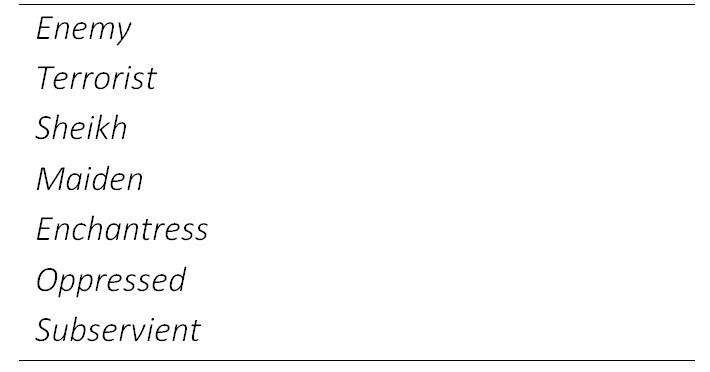
Table 5.2 List of Films Selected, Year Released and Ranking
| Year Released | Title | Rank | Year Released | Title | Rank |
| 2001 | The Mummy Returns | 6 | 2006 | 300 | 6 |
| 2001 | Black Hawk Down | 18 | 2006 | Click | 14 |
| 2002 | The Scorpion King | 29 | 2006 | Borat | 17 |
| 2004 | Hidalgo | 41 | 2006 | World Trade Center | 37 |
| 2004 | The Manchurian Candidate | 44 | 2006 | Babel | 91 |
| 2004 | Chronicles of Riddick | 54 | 2006 | United 93 | 94 |
| 2004 | Alexander | 80 | 2007 | Charlie Wilson´s War | 40 |
| 2004 | Team America | 83 | 2007 | The Kingdom | 58 |
| 2004 | Around the World in 80 Days | 94 | 2007 | Shooter | 59 |
| 2005 | Jarhead | 40 | 2008 | Iron Man | 2 |
| 2005 | Syriana | 55 | 2008 | You Don´t Mess with The Zohan | 30 |
| 2005 | Munich | 61 | 2008 | Vantage Point | 44 |
| 2005 | The Kingdom of Heaven | 62 | 2008 | Body of Lies | 72 |
| 2006 | The Da Vinci Code | 5 | 2008 | Meet The Spartans | 74 |
| 2008 | Harold and Kumar Escape from Guantanamo Bay | 75 |
Figure 6.1 Male Images by Stereotype
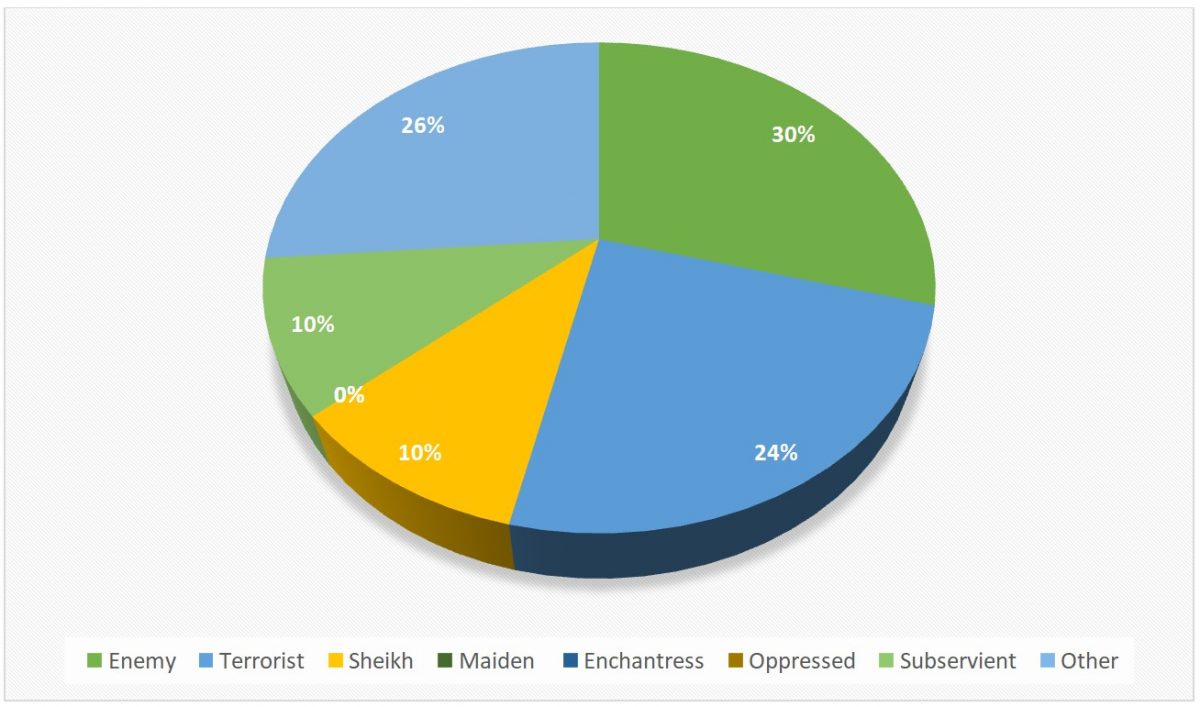
Figure 6.2 Major/Supporting Male Images by Stereotype
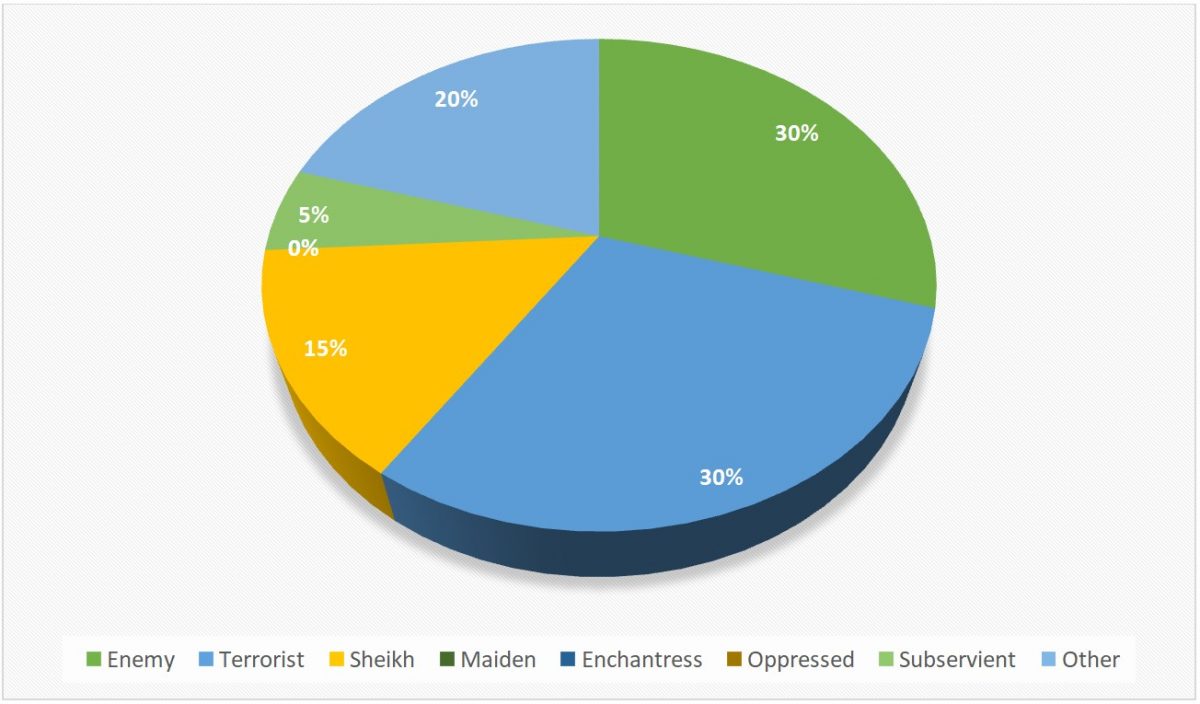
Figure 6.3 Female Images by Stereotype
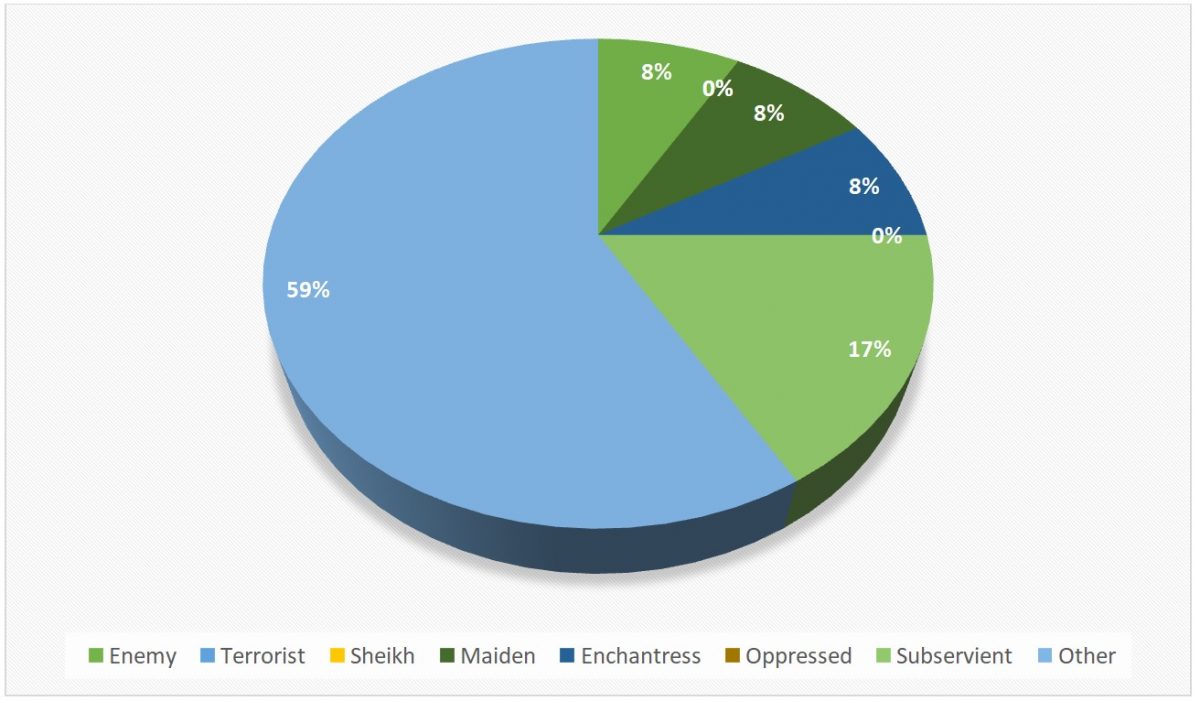
Figure 6.4 Major/Supporting Female Images by Stereotype
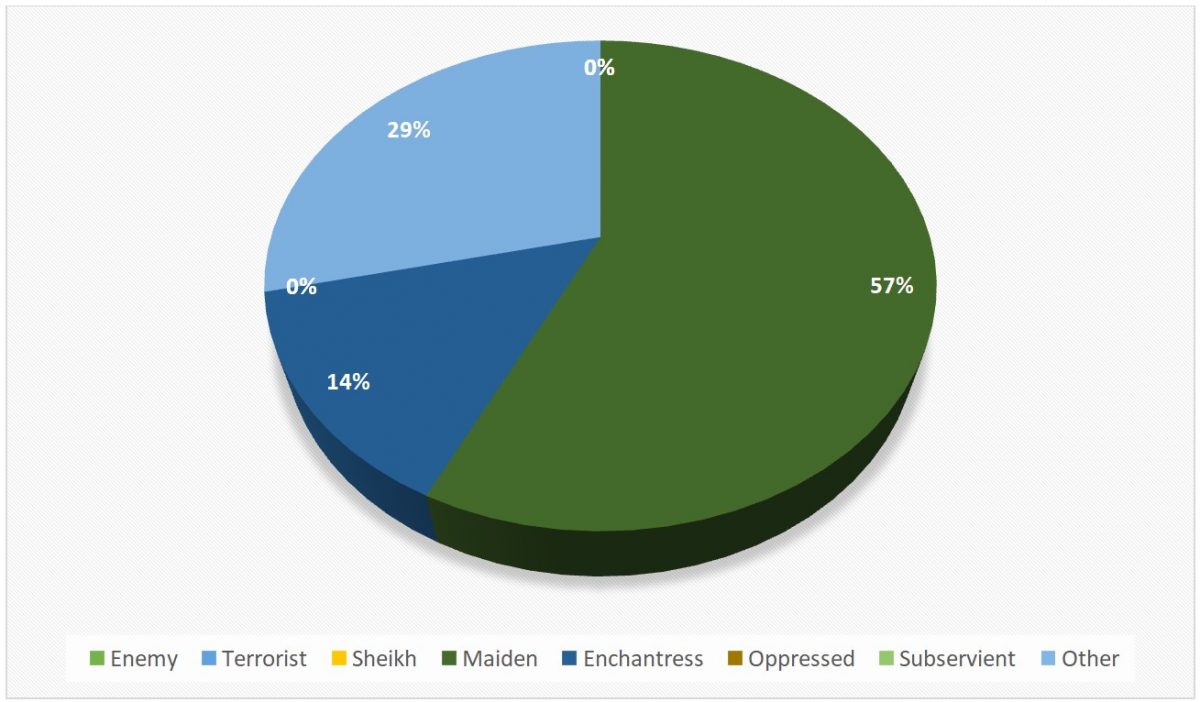
Figure 6.5 Male Images by Stereotype and Language Variety
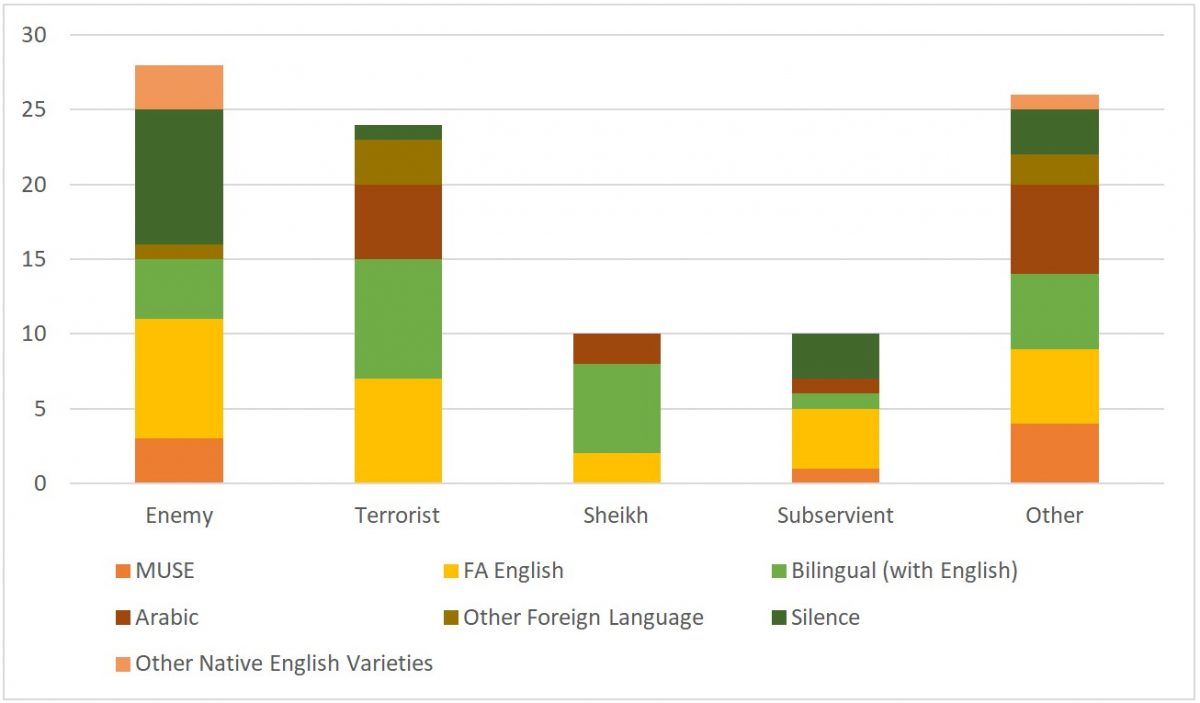
Figure 6.6 Female Images by Stereotype and Language Variety
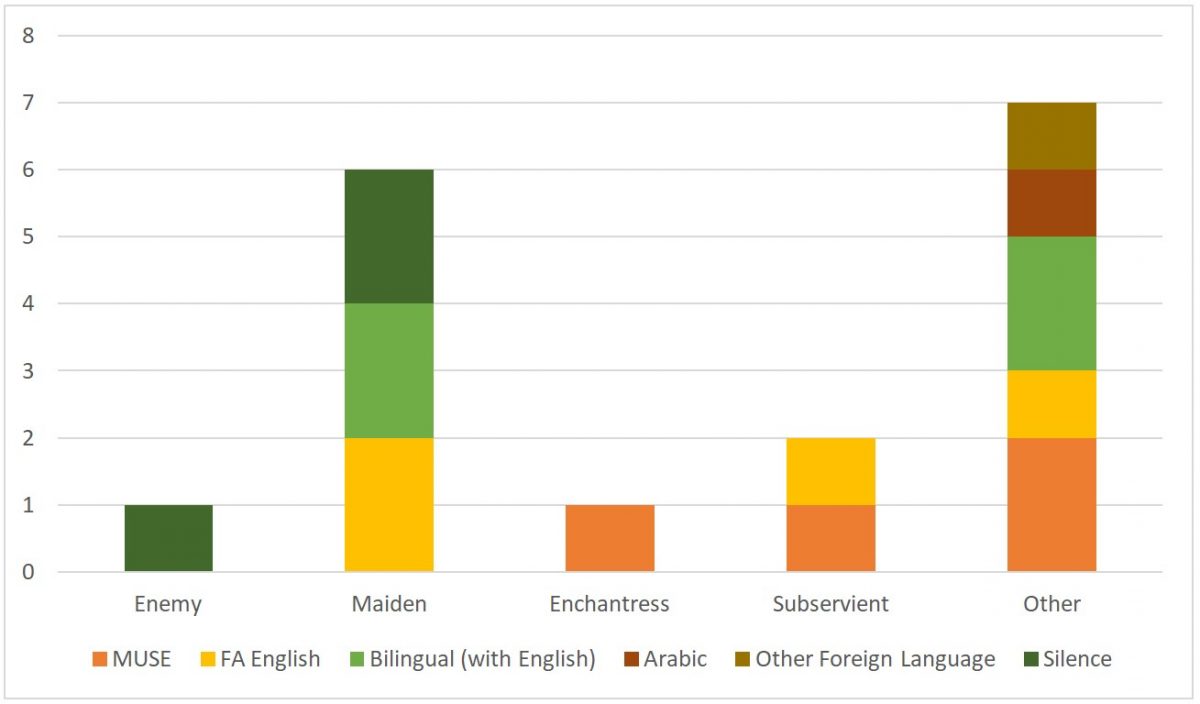
Figure 6.7 Images by Motivation and Stereotype
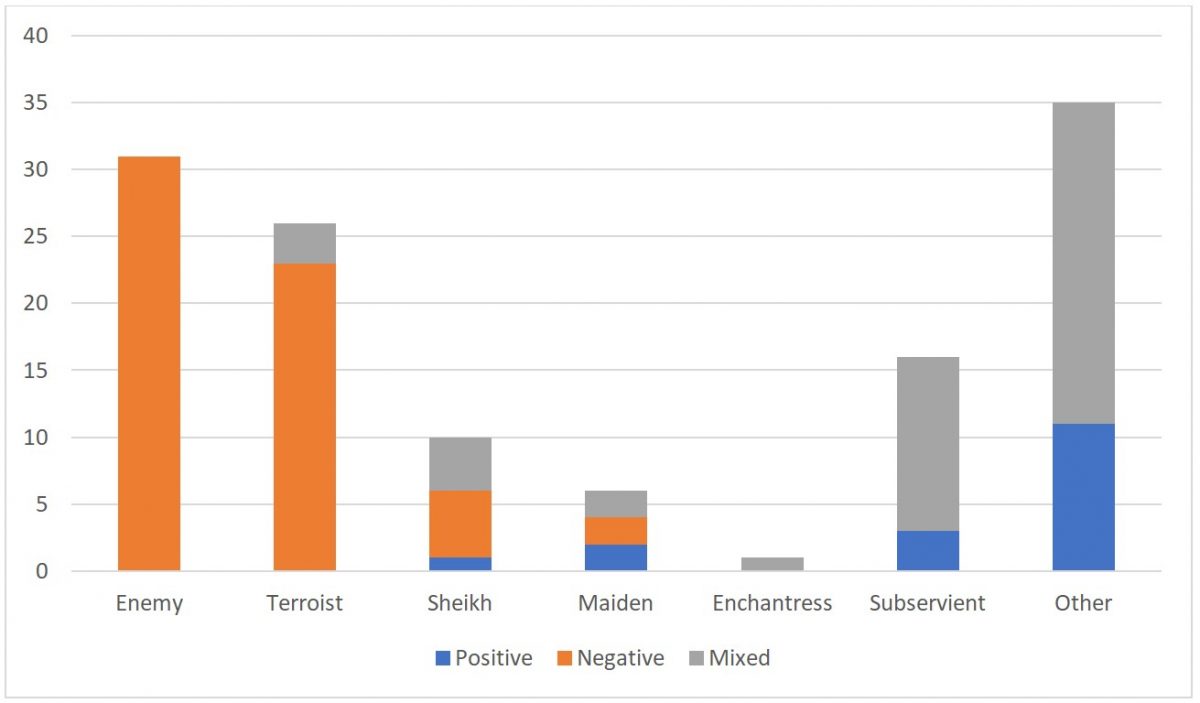
Figure 6.8 Images by Motivation and Language Variety
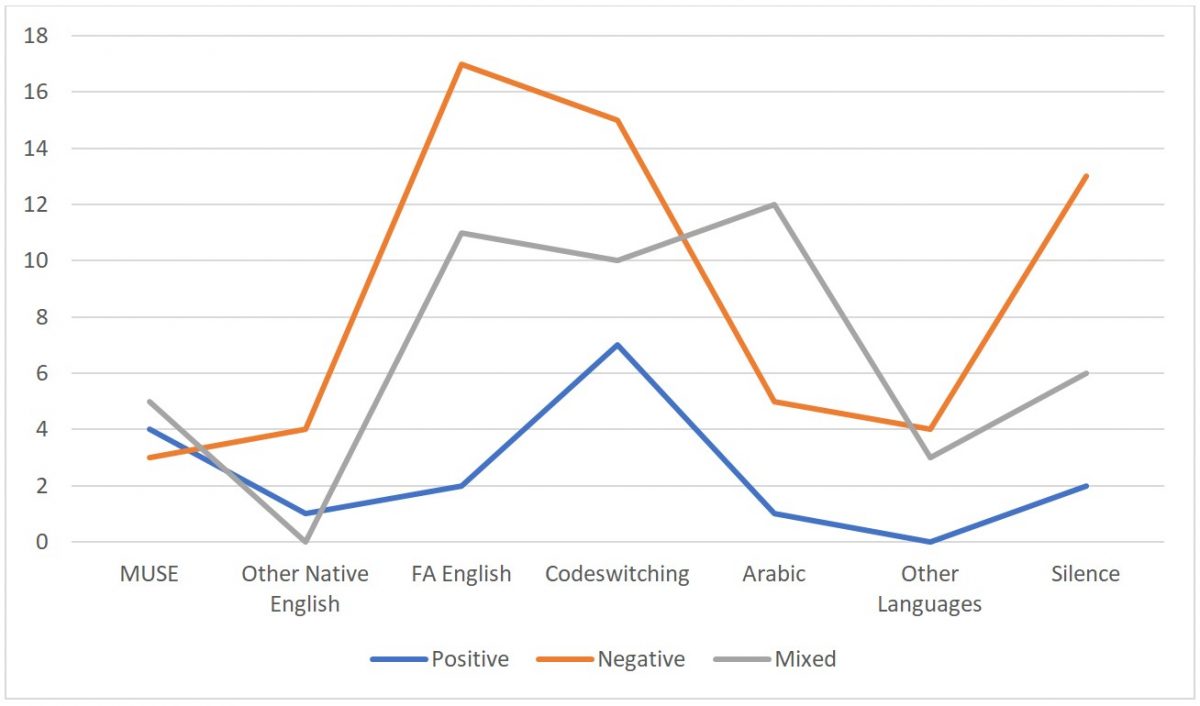
Figure 6.9 Positive Motivation Images by Stereotype and Language Variety
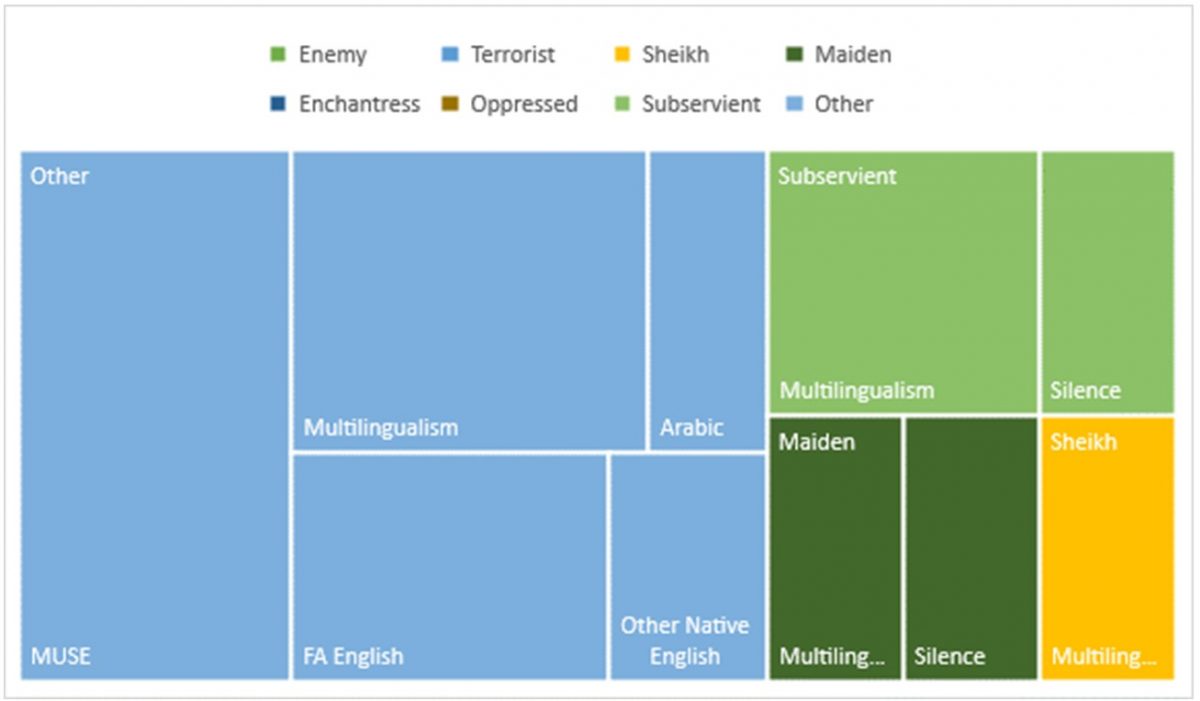
Figure 6.10 Negative Motivation Images by Stereotype and Language Variety
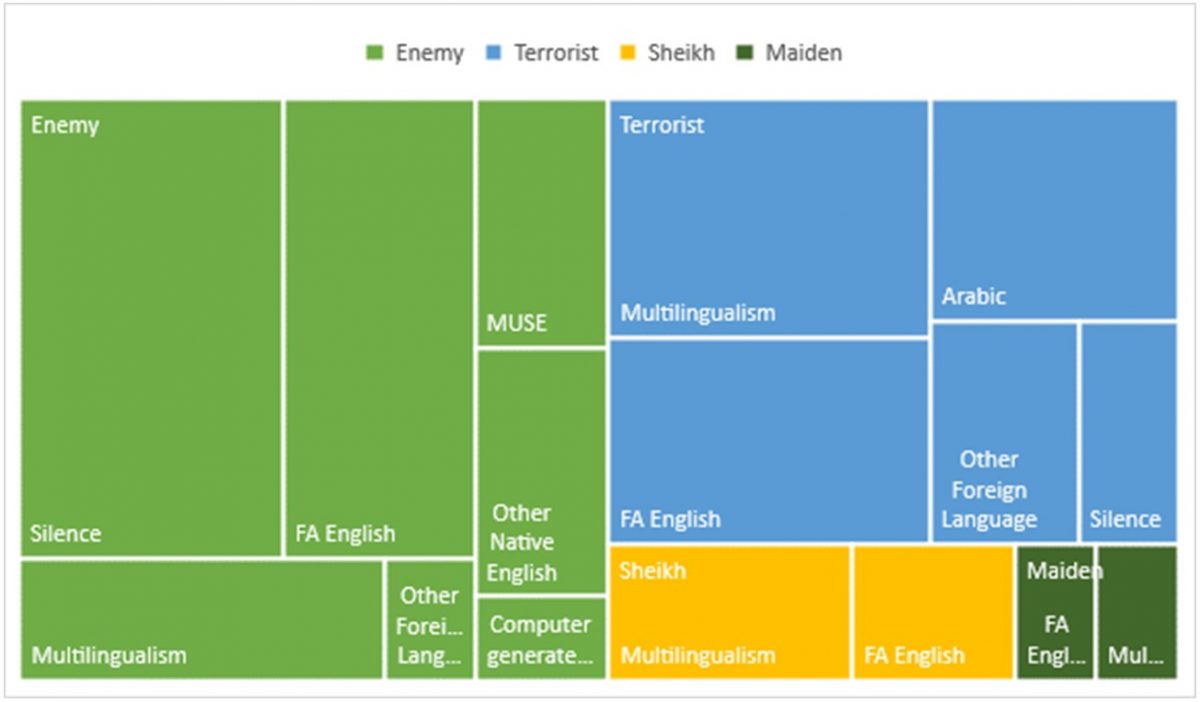
Figure 6.11 Mixed Motivation Images by Stereotype and Language Variety
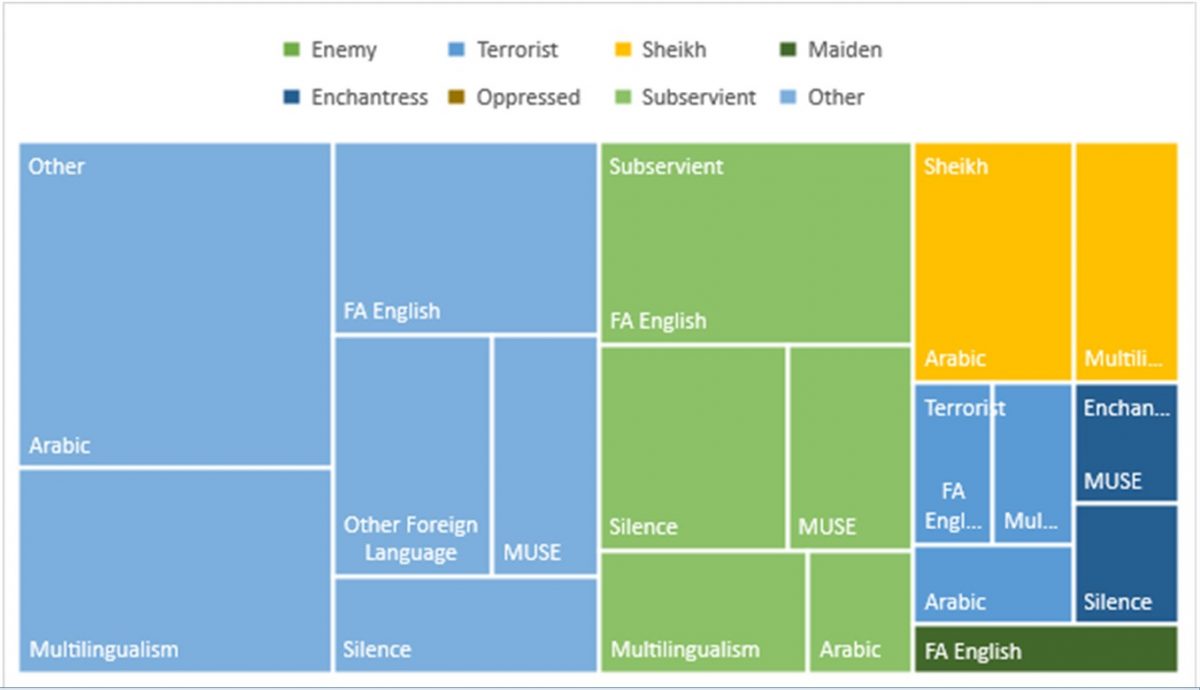
Figure 6.12 Images That Use Multilingualism by Language Combinations (%)
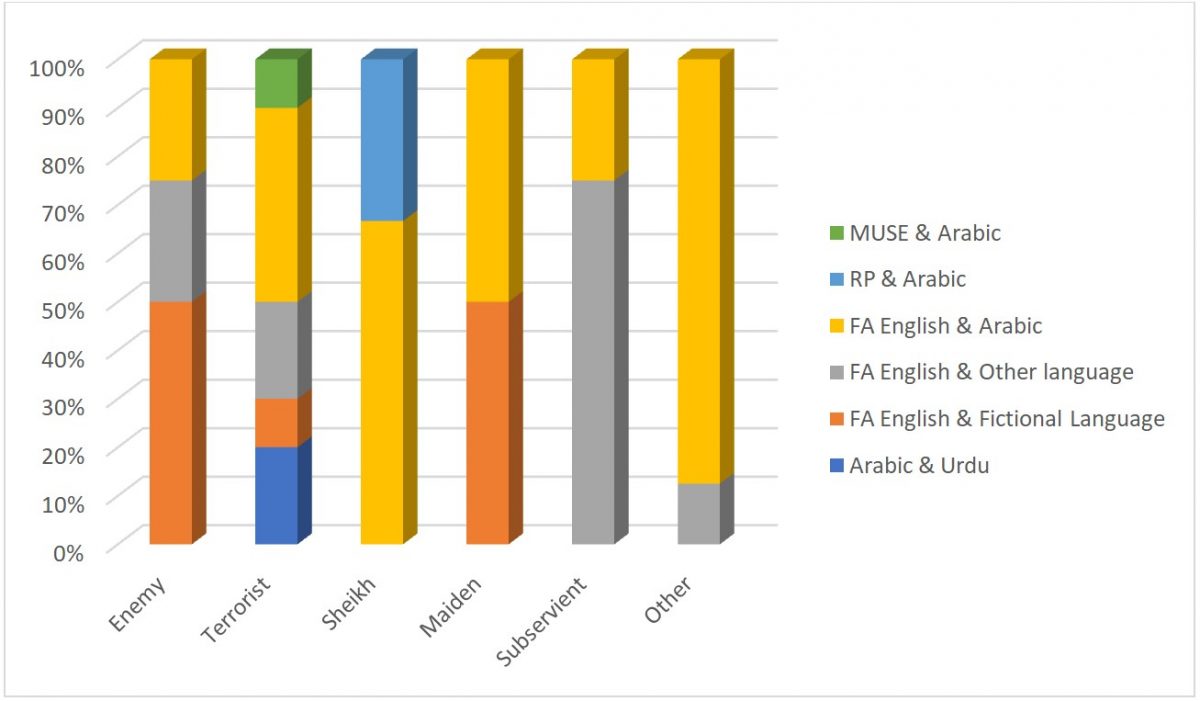
Appendices (download here, pdf)
References
ADAMS, A. 2019. Arab and Muslim Women in American Entertainment Media: A Qualitative Content Analysis of ‘Homeland’. Illinois, USA: Graduate School at OpenSIUC.
ANDERSEN, M. L. and TAYLOR H. F., 2016. Sociology: The Essentials. Wadsworth. United Kingdom: Cengage Learning.
ARVA, E., 2019. The Analogical Legacy of Ground Zero: Magical Realism in Post-9/11 Literary and Filmic Trauma Narratives. Annual Meeting of the American Comparative Literature Association: Georgetown University, Washington, DC: March 7-10, 2019.
AURACHER, J. and HIROSE, A., 2017. The Influence of Reader’s Stereotypes on the Assessment of Fictional Characters. Comparative Literature Studies, 54 (4), pp. 795-823
BAYRAKTAROĞLU, K., 2019. The Representation of Turkish Women in James Bond Films. Journal of Religion & Film, 23(1), pp. 1-34.
BERNSTEIN, M., and STUDLAR, G., eds., 1997. Visions of the East: Orientalism in Film. New Brunswick, New Jersey: Rutgers University Press.
BLEICHENBACHER, L., 2008. Multilingualism in the movies: Hollywood characters and their language choices. Tübingen, Germany: Francke Verlag.
BREEZE, R., 2011. Critical Discourse Analysis and Its Critics. Pragmatics, 214(4), pp. 493-525.
BROUGHTON, L., ed., 2020. Reframing Cult Westerns: From The Magnificent Seven to The Hateful Eight. London: Bloomsbury Academic.
CARTER, S. and DODDS, K., 2011. Hollywood and the ´War on Terror´: Genre-Geopolitics and ´Jacksonianism´ in The Kingdom. Environment and Planning D: Society and Space, 29 (1), 98-113.
CETTL, 2009. Terrorism in American Cinema An Analytical Filmography 1960-2008. London: McFarland & Company, Inc., Publishers.
CRAWFORD, W., and CSOMAY, E., 2016. Doing Corpus Linguistics. New York: Routledge.
DALBY, S., 2008. WarriorGeopolitics: Gladiator, Black Hawk Down and the Kingdom of Heaven. Political Geography, 27, 439-455.
DOBROW, J. and GIDNEY, C., 1998. The Good, the Bad, and the Foreign: The Use of Dialect in Children’s Animated Television. The Annals of the American Academy of Political and Social Science, 557, 105-119.
DODDS, K., 2003. Licensed to Stereotype: Geopolitics, James Bond and the Spectre of Balkanism. Geopolitics, 8 (2), 125-156.
DODDS, K., 2005. Global Geopolitics: A Critical Introduction. London:Pearson Education Limited.
DODDS, K., 2005. Screening Geopolitics: James Bond and the Early Cold War Films (1962-1967). Geopolitics, 10 (2), 266-289.
DODDS, K., 2007. Geopolitics: A Very Short Introduction. Oxford: Oxford University Press.
DODDS, K., 2007. Steve Bell’s Eye: Cartoons, Geopolitics and the Visualization of the `War on Terror’. Security Dialogue, 38 (2), 157-177.
DODDS, K., 2008. Hollywood and the Popular Geopolitics of the War on Terror. Third World Quarterly, 29 (8), 1621-1637.
DOKOTUM, O., 2020. Hollywood and Africa: Recycling the ‘Dark Continent’ Myth from 1908-2020. Makhanda, South Africa: African Humanities Program.
DRAGOJEVIC, M., MASTRO, D., GILES, H., and SINK, A., 2016. Silencing nonstandard speakers: A content analysis of accent portrayals on American primetime television. Language in Society, 45(1), 59-85.
DUMPER, M. and STANLEY, B., eds. 2006. Cities of the Middle East and North Africa: A Historical Encyclopaedia. Oxford: Clio.
EPHRATT, M., 2008. The Functions of Silence. Journal of Pragmatics, 40, pp. 1909-1938.
FISKE, S. T., 1998. Stereotyping, prejudice, and discrimination. In D. T. Gilbert, S. T. Fiske, & G. Lindzey eds., The Handbook of Social Psychology. Oxford: Oxford University Press, pp. 357–411.
FUNNELL, L. and DODDS, K., 2017 Geographies, Genders and Geopolitics of James Bond. London: Macmillan Publishers Ltd.
GILES, H and RAKIĆ, T, 2014. Language Attitudes: Social Determinants and Consequences of Language Variation. In: T. HOLTGRAVES, ed., The Oxford Handbook of Language and Social Psychology. Oxford: Oxford University Press.
GRECO LARSON, S., 2005. Media and Minorities: The Politics of Race in News and Entertainment. Oxford: Rowman & Littlefield Publishers, INC.
GREENBERG, G. and GOTTSCHALK, P., 2019. Islamophobia and Anti-Muslim Sentiment. London: Rowman & Littlefield.
HAIDER, M., 2019. The Racialization of the Muslim Body and Space in Hollywood. Sociology of Race and Ethnicity.
IBRAHIM SHOUSA, A., 2010. A Critical Discourse Analysis of the Image of Arabs in the American Press. Thesis. (PhD). Alexandria University.
IMDb, 2020. Top Box Office (US). [online] Available at: https://www.imdb.com/chart/boxoffice/?ref_=nv_ch_cht [accessed 1 September 2019].
JÄGER, S. and MAIER, F., 2009. Analysing Discourses and Dispositives: A Foucauldian Approach to Theory and Methodology. In: R. WODAK and M. MEYER, eds., Methods of Critical Discourse Studies. London: Sage.
KESKIN, T., 2018. Middle East Studies After September 11: Neo-Orientalism American Hegemony and Academia. Boston: Brill.
KHATIB, L., 2006. Filming the Modern Middle East: Politics in the Cinemas of Hollywood and the Arab World. London: I. B. Tauris & Co. Ltd.
LEE, A., 2020. All You Have Got is Tokenism. In: L. T. BENUTO, M. P. DUCKWORTH, MASUDA, W. O´DONOHUE, eds., Prejudice, Stigma, Privilege and Oppression. Cham, Switzerland: Springer Nature AG.
LEWIS, R., 1996. Gendering Orientalism: Race, Femininity and Representation. London: Routledge.
LIPPI-GREEN, R., 1997. English with an Accent: Language, Ideology and Discrimination in the United States. London: Routledge.
LOUKIDES, P. and FULLER, L., 1990. Beyond the Stars: Stock characters in American popular film. Ohio: Bowling Green State University Publishing Press.
MAHDI, W., 2015. The Cultural Politics of Otherness: Arab Americans at Crossroads of U.S.-Arab Imagery. Thesis. (PhD). University of Minnesota.
MARŽIĆ, D., 2019. The Linguistic Anatomy of a Villain: A Discourse of Villainy. Thesis. (Master´s). University of Rijeka.
MCSWEENEY, T., 2017. American Cinema in the Shadow of 9/11. Edinburgh: Edinburgh University Press Ltd.
METZ, C., 1964. Le cinémalangue ou langage ?Communications, 4, pp.52-90.
MILLER, J. 2008. Otherness. In: GIVEN, M., ed., The SAGE Encyclopaedia of Qualitative Research Methods. Thousand Oaks, CA: SAGE Publications, Inc. pp. 588–591.
MÜNSTERBERG, H., 1916. The Photoplay A Psychological Study. New York: D. Appleton and Company.
Ó TUATHAIL, G., 1996. Critical Geopolitics. The Politics of Writing Global Space. London: Routledge.
Ó TUATHAIL, G., and DALBY, S., 1998. Rethinking Geopolitics. London: Routledge.
OLSON, D., 2017. Black Children in Hollywood Cinema. Cham, Switzerland: Springer International Publishing AG.
RAHIMI, A. and AMIRIAN, R., 2017. A Critical Discourse Analysis of the Representation of Iranians in a Western Movie “Not Without My Daughter. LangLit, 3 (3), 56-71.
RAMÍREZ BERG, C. 2009. Latino Images in Film: Stereotypes, Subversion, and Resistance. USA: University of Texas Press.
Reel Bad Arabs: How Hollywood Vilifies a People, 2006. Dir. Sut JHALLY. Film. Media Education Foundation.
ROBINSON, H., 2007. Russians in Hollywood, Hollywood’s Russians: Biography of an Image. USA: Northeastern University Press.
ROSCH, E. 1978. Principles of Categorization. In: E. ROSCH, and B. LLOYD, eds., Cognition and Categorization. Hillsdale, NJ: Erlbaum, pp. 27-48.
RUIJTER, N., 2017. Good to Sound Bad: A Study on Attitudes towards the RP British English Accent. Thesis. (Bachelor´s). Utrecht University.
SAID, E., 1978. Orientalism. London: Routledge & Kegan.
SAUNDERS, R. A., 2012. Undead Spaces: Fear, Globalisation, and the Popular Geopolitics of Zombiism. Geopolitics, 17 (1), 80-104.
SAUNDERS, R. A., 2015. Imperial Imaginaries: Employing Science Fiction to Talk About Geopolitics. In: CASO and HAMILTON, eds. Popular Culture and World Politics Theories, Methods, Pedagogies. Bristol: E-International Relations, 149-159.
SEMMERLING, T. J., 2006. Evil Arabs in American Popular Film: Orientalist Fear. Austin: University of Texas Press.
SHAHEEN, J., 1984. The TV Arab. Bowling Green, Ohio: Popular Press.
SHAHEEN, J., 2003. Reel Bad Arabs: How Hollywood Vilifies a People. New York: Olive Branch Press.
SHAHEEN, J., 2007. Hollywood’s reel Arab Women. Media Development, 54(2), pp. 27-29.
SHAHEEN, J., 2008. Guilty: Hollywood´s Verdict on Arabs After 9/11. Northampton, MA, USA: Olive Branch Press.
SHAPIRO, M., 2008. Cinematic Geopolitics. London: Routledge.
SOARES, T., 2017. Animated Films and Linguistic Stereotypes: A Critical Discourse Analysis of Accent Use in Disney Animated Films. Thesis. (Master´s). Bridgewater State University.
TAYYARA, A., 2014. The Representations of Arab-Muslims through the Language Lens. Cultural Encounters, Conflicts and Resolutions. 1 (2).
WATSON, A., 2020. Tickets sold at the North American box office from 1980 to 2019. Statista, [online] Available at: https://www.statista.com/statistics/187073/tickets-sold-at-the-north-american-box-office-since-1980/ [Accessed 24 June 2020].
WEBER, C., 2005. Imagining America at War. London: Routledge.
WESTWELL, 2014. Parallel lines post-9-11 American cinema. Chichester, West Sussex: Columbia University Press.
WESTWELL, G., 2015. War Cinema: Hollywood on the Frontline. London: Wallflower Press.
YIN, T., 2010. Through a Screen Darkly: Hollywood as a Measure of Discrimination against Arabs and Muslims. Duke Forum for Law and Social Change, 2, pp.100-121.
YOUSMAN, B., 2007. Study Guide Reel Bad Arabs: How Hollywood Vilifies a People. Media Education Foundation.
Further Reading on E-International Relations
- How Do Travel Vlogs Contribute to GDP’s Dominance in World Politics?
- Predictability in an Unpredictable World: Ritual and the NATO Summit in Vilnius
- Sovereignty with Chinese Characteristics? Norms in a Changing World Order
- Critical Reflections on Ethnicity and Colourism in Africa and the Diaspora
- “Fake It Till You Make It?” Post-Coloniality and Consumer Culture in Africa
- “The Women in White” – Protesting for a Peaceful Political Emancipation in Belarus